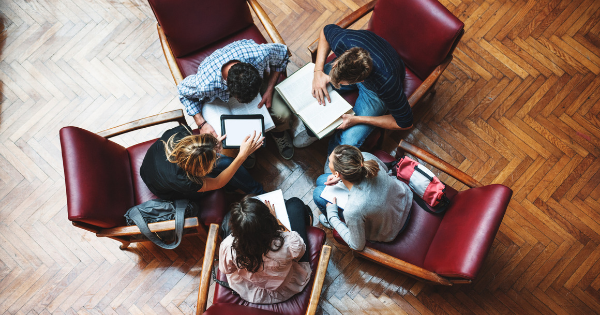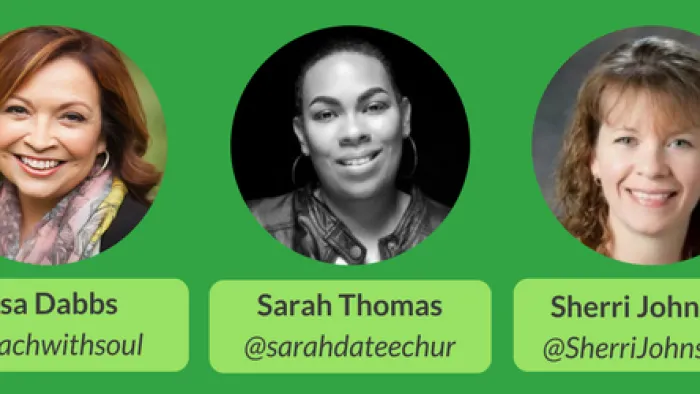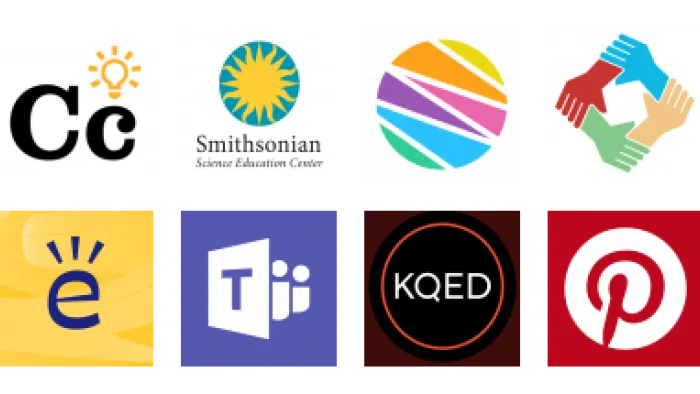What is a PLN, and why should you start one? Our panel of teachers and PLN experts weigh in.

Traditional professional development for teachers, while important, doesn't usually address every teacher's unique needs when it comes to professional learning. Top-down PD solutions tend to ignore what we want most: More opportunities for choice and topics that are timely and actually relevant to our unique classrooms.
It's no wonder, then, that online PLNs -- professional (or sometimes "personal") learning networks -- have become so popular in recent years. While Twitter is probably the most widely used, teachers are finding personalized professional learning on plenty of other platforms.
So, what's the best way to start your own PLN? And what are the benefits of having one? We interviewed a group of five experts and connected educators on the topic. Check out what they have to say! And feel free to share any other resources or your own ideas on the topic in the comments below.

How do you define the term "PLN" for teachers? And how are PLNs different from more traditional PD?
Sarah Thomas: PLNs are personal, or professional, learning networks. They're a community that you build that’s customized to what you want or need to learn. These allow for maximum choice and truly personalize the way that we learn. A PLN might be similar to traditional PD in that some of the topics could overlap; however, just like peer learning is powerful for our students, the same can be said for us as lifelong learners.
Lisa Dabbs: In traditional PD it's often the case that an educator has no choice over the topic or the type of content shared. A PLN is more like a modern, 21st-century teacher's lounge. A place where ideas can be shared, exchanged, talked about, and transformed. Ideally, a safe place where questions can be presented without judgment. A PLN is a place where an educator at any level can direct and guide their own learning. They can be their own seeker of knowledge.
For teachers, what's the biggest benefit of having a PLN?
Sherri Johnston: PLNs give teachers agency over their learning. If you have an interest, you can find someone out there who will help you dig deeper. You have access to thousands of other teachers, at the click of a button, with different perspectives, work experiences, and tools that could spark a new idea, assist with problem-solving, or provide a different way of thinking.
Steven W. Anderson: The biggest benefit is now we aren't bound by the traditional ideas that are housed in our local schools. We're also open to a much wider pool of knowledge. Alone we are smart, but together we are brilliant. When we connect to each other, especially as educators, we're exposed to thoughts, ideas, and plans that we normally wouldn't have access to.
Sarah Thomas: You can learn whatever you want to learn from people you choose to connect with. Additionally, you can find collaborators for projects or global partners for your students. I first became connected in 2013 and learned so many new ideas to try with my students. In addition, they were able to connect with their peers around the world to learn together.
Any advice for teachers who are just getting started with an online PLN?
Ashley Fort: Start small. Try following a few people on Twitter or subscribe to a few weekly newsletters. If you find a discussion on Twitter that interests you, follow it using a hashtag search. If you can, organize the newsletters in your email to be filed automatically so they don't clog your inbox, but you can easily find them to read later.
Steven W. Anderson: Some might say that to start a PLN is to jump right into conversations. That may not work for many, if not most. It can be tough to find the best conversations or even know what to say. There is power in lurking and consuming information because you can be exposed to great knowledge. To get started, the best thing to do is read blogs. Check out the Teach100 or Cybraryman's List of Educational Blogs to start. Find a few that you can commit to reading every week.
Lisa Dabbs: I believe strongly in the power of mentoring. I believe that this relationship is vital to the success of any teacher, especially a new one. When you're first thinking about how to take that step to reach out to build your PLN, finding someone who is already well connected to support you on the journey will be helpful.
Sarah Thomas: I would suggest taking it at your own speed. If you're anything like me, you have huge FOMO (fear of missing out), but eventually you'll probably realize that you can't do it all and be everywhere. I'd suggest you learn to be OK with that. I live and breathe connections, but there are times I may disappear, depending on what else I have on my plate. When I come back, my PLN is there, ready and waiting for me.
How important is Twitter when it comes to teachers' PLNs? What are some other PLN options?
Steven W. Anderson: Outside of reading blogs, Twitter is a must for any educator. But being there doesn't mean you have to send a Tweet. Hashtags like #edchat can be a great way to see what conversations are happening and who is sharing, but you don’t have to have an account to use Twitter search to see those tweets.
Ashley Fort: Twitter is my favorite platform for my PLN. [It's] perfect for those days when you need a little inspiration but don't want to do a lot of reading. Other options can include connecting on Facebook or Google+ communities (my second favorite!), following blogs, and subscribing to newsletters. Some of my favorites include Vicki Davis, Tara Martin, and George Couros, as well as Common Sense Education. You can also use Pinterest to expand your PLN.
Lisa Dabbs: By simply spending about 15 minutes a day tweeting, sharing, and participating in chats, you'll have options to connect with friends, make new ones, and grow your list of powerful resources to support your work. If you're a fan of visual content, another great place to grow a PLN is on Instagram. Lately, I've found that the education community there has become very engaged.
Sarah Thomas: I also recommend Voxer, which allows you to connect using your voice. It's a walkie-talkie app that records messages, and you can have groups of up to 500 people with a pro account. This is my favorite, because I listen on my commute to and from work. I've also built amazing friendships with other educators I chat with every day, even if we’ve never met face-to-face. I'd start with any network that you are already familiar with. There are groups of educators on practically every platform.
Any advice on how teachers can go "from PLN to practice"? In other words, how do you take the ideas and inspiration you find online and put them into practice in your classroom?
Sherri Johnston: Start small. You're a superstar just for getting out there and trying something new! Many of us make the mistake of trying too much at once and not being able to keep up, and then it all starts falling apart (I speak from experience). Once I stepped back … [that's when] I created a path for success.
Lisa Dabbs: Having a ton of resources curated and collected won't do you any good if you aren't working to apply them. When you start to apply those resources, come back to your PLN and let them know what's up!
Ashley Fort: Go back through your retweets and choose one or two things to try. Be prepared to go off script, though, because nothing usually goes as planned. And even if something goes wrong (and it will!), don't be afraid to try again! After you try an idea out, post some pics or a brief reflection and share your experience on Twitter.
Steven W. Anderson: Take a chance -- go out on a limb and see what happens. Use your PLN to ask for help and advice, and reflect back when things go really well or don't turn out as you intended. You don't have to learn and practice in a bubble. But you have to take that first step and see what happens.









